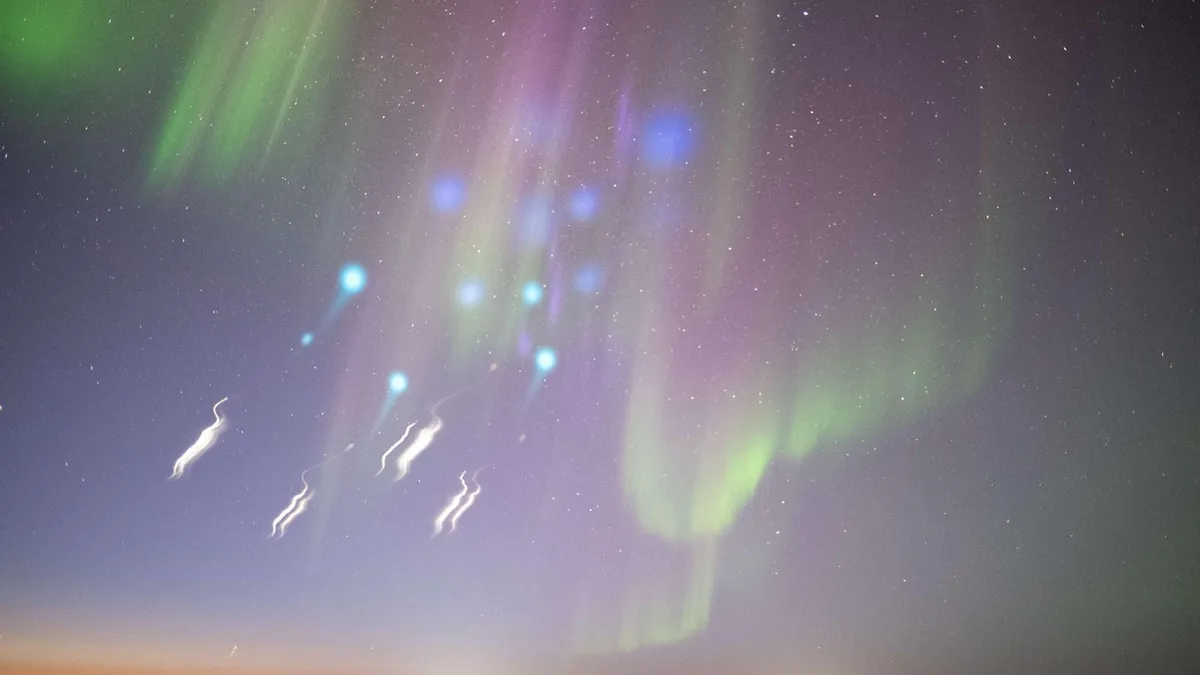
On March 25, 2025, two NASA rockets launched from Alaska, illuminating the night sky with dazzling blue lights and white vapor trails, set against the mesmerizing backdrop of the Northern Lights. This stunning display was visible across central and northern Alaska, captivating residents and scientists alike.
The rocket launch was part of an ambitious scientific experiment known as Awesome (Auroral Waves Excited by Substorm Onset Magnetic Events). The primary goal of this experiment is to understand how auroral substorms impact the Earth’s thermosphere, which is an upper layer of the atmosphere located approximately 50-350 miles (80-560 kilometers) above the Earth’s surface. This research aims to uncover whether the energy and momentum introduced into the middle and lower thermosphere by these substorms might compromise its stability.
Mark Conde from the Geophysical Institute and the University of Alaska Fairbanks College of Natural Science and Mathematics emphasized the importance of this research, stating, “Change in composition of the atmosphere has consequences for communication, navigation, and spacecraft operations. Our experiment will allow forecasters to use simpler and potentially more accurate methods of space weather prediction.”
The original plan for the experiment included launching all three rockets within a three-hour timeframe. NASA's Wallops Flight Facility confirmed that the first two rockets were successfully launched on March 25, 2025. However, an issue was detected with the Malemute motor on the third rocket, which will require further assessment and repair.
The launch site, Poker Flat, located 20 miles north of Fairbanks, operates under a contract with NASA's Wallops Flight Facility, which is part of the Goddard Space Flight Center.
The timing of this experiment was meticulously planned. Scientists were prepared to launch the rockets as soon as an auroral substorm occurred, and their confidence was well-founded. This is because, following an equinox, Earth's magnetic field aligns favorably with the solar wind. Furthermore, the sun is currently at solar maximum, the peak of the approximately 11-year Solar Cycle, during which magnetic activity reaches its highest levels and auroras become more frequent.
The color of the auroras can vary significantly with altitude. At altitudes between 50 and 110 miles, the most common aurora color is green, typically seen at about 60 to 190 miles (100 to 300 kilometers). In contrast, red auroras are more prevalent at altitudes exceeding 150 miles (240 kilometers), with both colors produced by oxygen molecules.
For those interested in space phenomena, additional articles worth exploring include:
Neptune’s Auroras Imaged For First Time As Webb And Hubble Team Up Saturday Sees The First, Best And Riskiest Solar Eclipse Of 2025This successful launch and the exciting research that follows will undoubtedly contribute valuable insights into the dynamics of our atmosphere and the effects of space weather on technological systems on Earth.